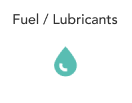Paper – Modelling the Variation in Precious Metal Dispersion in a Three Way Catalytic Converter after Aging
by Victoria McConnell | Jan 9, 2018 | AUTO, Whitepaper

ABSTRACT
With emission legislations becoming ever more stringent, there is an increased pressure on aftertreatment systems and more specifically threeway catalysts. With recent developments in emission legislations, there is a requirement for more complex after-treatment systems and understanding of the aging process.
Whilst the body of understanding on catalyst deactivation and, in particular, catalyst aging is growing, there are still significant gaps in understanding, particularly how real
world variations in temperature, flow rate and gas concentrations affect catalyst behavior.
Under normal driving conditions, the catalyst can experience varying oxygen concentrations, such as under heavy acceleration or cruising down a hill will show a variation in oxygen from the engine emissions. The effect that varying oxygen concentrations has on the rate of aging is not fully understood and hence the total deactivation and conversion efficiencies are not known throughout the catalyst lifetime.
Traditionally, catalyst specification has relied heavily on catalyst testing over a wide range of mileage, with catalyst aging being conducted via vehicle/bench testing, focusing on 3 main parameters; flow (space velocity), temperature (inlet/bed) and lambda (oxygen concentration). The main drawback of this approach, particularly in the early stages of powertrain development, is the cost and resource required to conduct the testing. It is in this area of development that a kinetic model to predict the catalyst performance taking into account aging time, temperature, flow rate and exposure to oxygen concentration would be of great benefit.
This paper presents a continuation of previous work into the investigation of the effect of varying oxygen concentration on the rate of catalyst aging. A number of commercially available palladium three-way catalysts were aged over a precise temperature cycle at varying oxygen concentrations for different aging times related back to a mileage. The results were analyzed in detail and fed into a catalyst model in which a built in optimizer calculated the initial pre-exponential and activation energy for characterization tests. Once optimized, the model then calculated the variation in dispersion for the catalysts aged under varying levels of oxygen at a range of set mileage. The variation in dispersion over aging is presented and compared with predictions based on the standard aging algorithm and with others proposed in literature.











